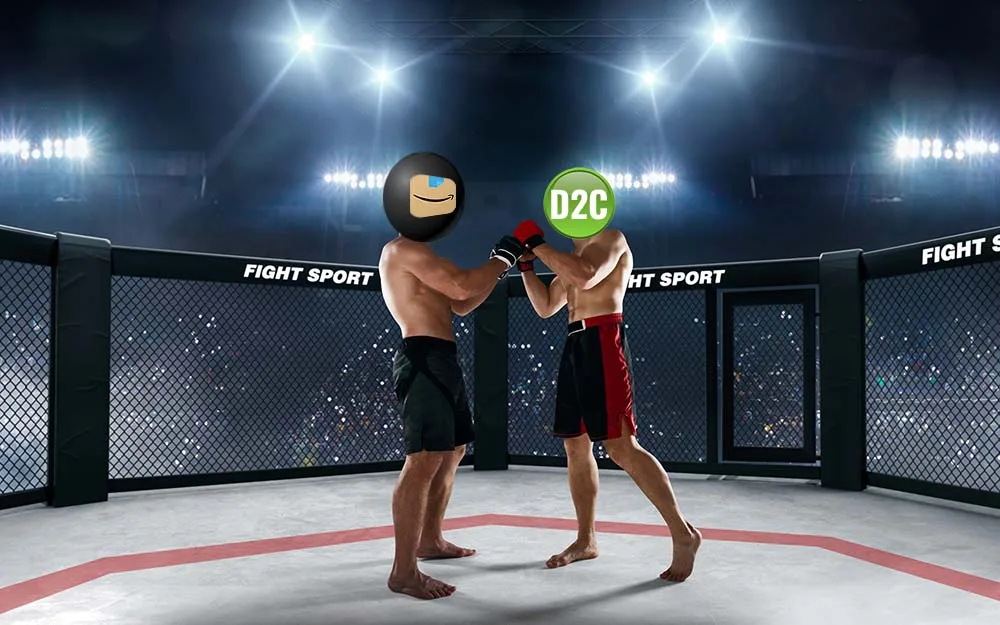
In the vast and ever-evolving landscape of Indian e-commerce, a fascinating retail battle is taking place: E-commerce Marketplaces versus Direct-to-Consumer (D2C) Brands. Each approach has its unique strengths and appeals to both consumers and entrepreneurs. In this blog, we’ll dissect this competition, exploring the advantages, challenges, and potential outcomes for both sides.
The E-commerce Marketplace Ecosystem
E-commerce marketplaces like Amazon, Flipkart, and Snapdeal have become household names in India. They offer a platform where various sellers can list their products and reach a massive audience. Here are the pros and cons:
Pros:
- Massive Reach: Marketplaces boast millions of visitors daily, providing sellers with an extensive customer base from day one.
- Logistics and Fulfillment: They often provide logistics and warehousing support, streamlining the order fulfillment process for sellers.
- Credibility: Shoppers trust established marketplaces, which can boost sales for new sellers.
Cons:
- High Competition: The vast number of sellers can lead to intense competition and price wars.
- Commissions and Fees: Marketplaces typically charge fees for using their platform, reducing the seller’s profit margins.
- Limited Brand Control: Sellers have limited control over branding and customer relationships.
The Rise of D2C Brands
In contrast, D2C brands are companies that sell their products directly to consumers, often through their websites or physical stores. They’ve gained significant traction in India’s e-commerce landscape. Here’s what they bring to the table:
Pros:
- Brand Control: D2C brands have full control over branding, marketing, and customer relationships, allowing for a more personalized experience.
- Higher Profit Margins: Without marketplace fees, D2C brands can often enjoy higher profit margins.
- Niche Focus: D2C brands can cater to specific niches or segments, offering unique products that resonate with their target audience.
Cons:
- Limited Initial Reach: Building an audience from scratch can be challenging, requiring substantial marketing efforts.
- Logistics and Fulfillment: Managing logistics and order fulfillment can be complex, especially for small startups.
- Establishing Credibility: D2C brands must work harder to establish trust and credibility with consumers compared to established marketplaces.
The Indian Consumer Perspective
From the consumer’s viewpoint, both options have their appeal. Shoppers often turn to marketplaces for convenience, a wide product selection, and competitive prices. On the other hand, they seek out D2C brands for unique, high-quality products and a more personalized shopping experience.
The Hybrid Approach
In recent years, an interesting trend has emerged—a hybrid approach. Some D2C brands start on marketplaces to gain visibility and then transition to selling on their platforms once they’ve established a customer base. This allows them to harness the benefits of both models.
The Future Outlook
The future of e-commerce in India is likely to be a coexistence of marketplaces and D2C brands. Marketplaces will continue to provide convenience and access to a vast array of products, while D2C brands will offer innovation, niche solutions, and personalized interactions.
Conclusion
The battle between E-commerce Marketplaces and D2C Brands in India is not a winner-takes-all scenario. Both have their unique strengths and cater to different consumer needs. As a seller or entrepreneur, your choice depends on your product, target audience, and long-term goals.
While marketplaces provide a head start with a broad customer base, D2C brands offer control, branding, and the potential for higher profits. The key lies in finding the right balance and leveraging the strengths of each model to thrive in the dynamic Indian e-commerce landscape.
In essence, the e-commerce game in India is not about choosing sides but about understanding the diverse preferences of Indian consumers and crafting a strategy that aligns with their evolving demands.


Leave A Comment